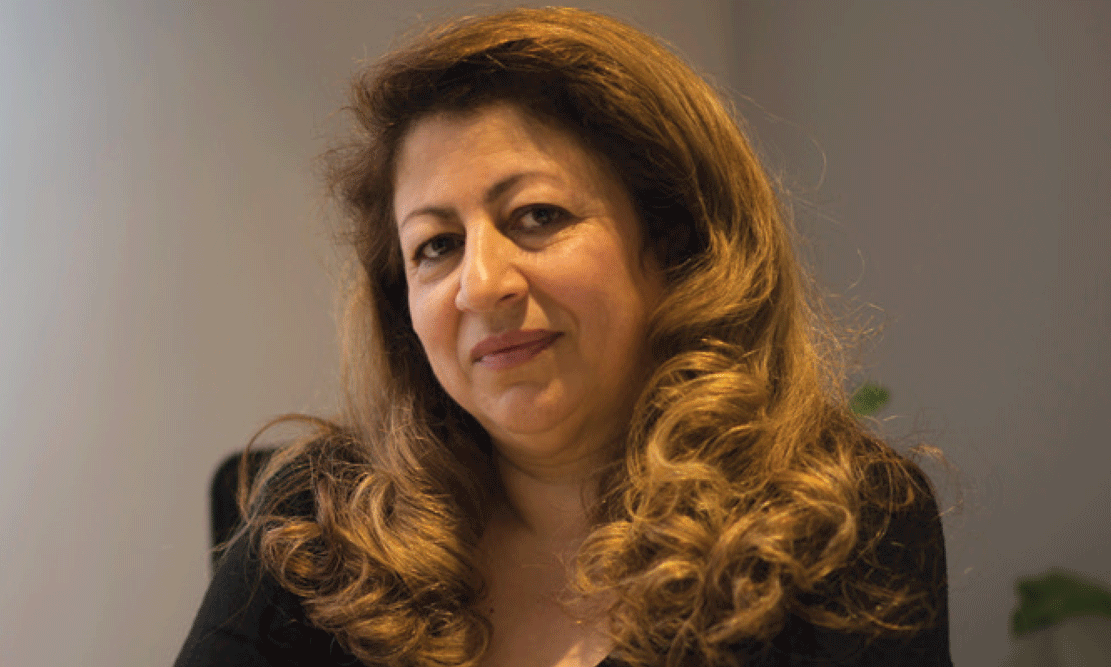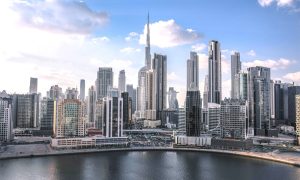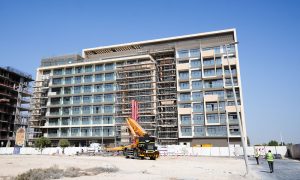Mahnaz Liaghat’s secret to success
Interior designer for the Sofitel Dubai Palm Jumeirah explains why client relations are key

With a sleek, newly-opened office in TECOM, Mahnaz Liaghat is a design leader with a clear vision. “I am gathering a group of passionate designers that really love their job and, as a result, really take care of the client,” she says, sitting behind a gleaming white desk. “Our vision is to be more client-focused than other companies, and to look after the projects from A-Z.”
Prior to setting up MDP Design in Dubai, the Bahraini made a name for herself as the interior designer and director of the Sofitel Dubai Palm Jumeirah, undertaken while she was one of three partners at Mirk. The acclaimed five-star hotel features 361 rooms and a lush internal green wall designed by renowned French botanical expert Patrick Blanc.
Reminiscing on the design process, Liaghat continues: “We kept the design simple, but created an environment that makes the user want to stick around for longer. The corridor introduces a huge amount of green, which changes the air and your mood. Hospitality design is all about the user experience.”
Liaghat’s passion and flair for design was cultivated early in life, she reveals. “From a very young age, I always stood out as being more talented than others. My passion towards 3D and art was noticeable from the beginning, and I won three governmental awards for design. Due to my passion, I was leaping through the field.”
Liaghat pursued the bright lights of the USA as an exchange student and remained in the country for 29 years, setting up a company along the way. She was persuaded to return to the Middle East as director of interiors for Burt Hill in 2005 and subsequently joined Mirk in 2008.
Although her new venture is firmly focused on hospitality design, Liaghat is unconcerned about the increasingly competitive marketplace, with several other hospitality design firms operating in Dubai.
“I think there are more than enough opportunities for qualified interior designers,” she says. “But in my experience, quality interior designers in this region are very, very rare. We focus on quality, not quantity?– this is why we are exceptional. There are so many different aspects to a building – from architecture to MEP – but the work of the interior designer is the hardest. This is because the interior is what you see. If there is a mistake with the MEP, no one will talk about it. There is so much coordination that you have to do with interiors.
“You are working with public spaces that will be used by many, many people, and you have to understand human psychology, the environment, as well as the needs of the operator. I haven’t seen many interior designers that fully understand all those aspects.”
She emphasises that it is integral for a project owner to hire a quality designer. “If you do your job correctly, you will ensure ?a return on investment for the owner, as people will want to visit the project. On the other hand, a designer that does not see the big picture will make incorrect decisions that adversely affect the operation of the building. You have to be able to understand how all the disciplines fit together.”
Liaghat adds that Building Information Modelling (BIM) is an invaluable tool for aiding designers with coordination. “I am 100% for BIM and I will push it. No matter how good someone thinks they are, there will always be some aspect of the design that has not been looked at. Using BIM will help. I think a lot of people will resist using it, especially those that never worked on a megaproject or internationally, but to me it is worth the investment.”
When asked to cite great examples of hospitality design in the region, Liaghat points to Al Qasr in Madinat Jumeirah as one of the better hotels in Dubai. Yet she is unimpressed with many other hotels in the region. “They may have pretty candles, but if you go deeper you will discover that they had many issues, such as replacing the stone, etc. For the Sofitel, we really focused on quality and got away from the normal style of the region. We showed that less is more.”
She reiterates that hospitality projects require high levels of passion and attention to detail. “For hospitality projects, you need to focus on every little corner and detail, right to the last minute. If you don’t love what you do, you cannot carry it through. If you have the passion, the reward when you finish the project is something that I cannot even describe. Most importantly, the client will benefit from a return on their investment and an increase in operational profit.”
According to Liaghat, boutique firms like MDP offer an enhanced level of client service compared to larger consultancies. She explains: “The large companies have many projects and many less senior people working on them. It is not often that the person who met the client originally will actually work on the project. In my experience, the clients in the US really appreciated a CEO that took a hands-on role. I don’t see that happening here.”
An exceptional level of client service can also protect against delayed or cancelled payments – an issue faced by many consultants and contractors in the region. “I’ve never had that experience in my life,” Liaghat insists. “I don’t think it is down to good luck. If you treat people well, they will treat you well. Clients chase me to send invoices. It is about the service you give. If you take care of the client, and look after their assets, they will not want to lose you.”
This advertorial appeared in the April edition of Middle East Consultant magazine























